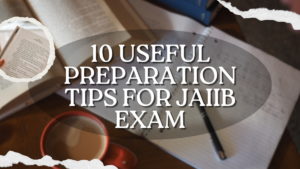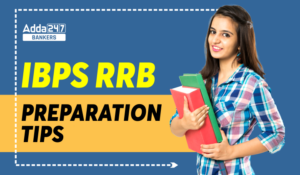Dear Aspirants,
Reasoning Questions for IBPS Exam 2019:
Reasoning Ability is an onerous section. With the increasing complexity of questions, it becomes hard for one to give it the cold shoulder. The only way to make the grade in this particular section in the forthcoming banking exams. And, to let you practice with the best of the latest pattern questions, here is the Adda247 Reasoning Quiz based on the exact same pattern of questions that are being asked in the exams.
Watch Video Solution Here
Directions (1- 5): In the following questions, the symbols @, &, %, $ and # are used with the following meaning as illustrated below:
‘P @ Q’ means ‘P is not smaller than Q’
‘P &Q’ means ‘P is neither greater than nor equal to Q’
‘P# Q’ means ‘P is neither greater than nor smaller than Q’
‘P $ Q’ means ‘P is not greater than Q’
‘P % Q’ means ‘P is neither smaller than nor equal to Q’.
Now in each of the following questions assuming the given statements to be true, find which of the three conclusions follow and give answer accordingly.
Q1. Statements: R @ V, V $ J &K
Conclusions:
I. K % R
II. J @ R
III. K % V
Only I is true
Only II is true
Only I and II are true
Only III is true
None of these
Solution:
Conclusions:
I. K % R ( Not True )
II. J @ R ( Not True )
III. K % V( True )
Q2. Statements: D % H @ V, V $ W
Conclusions:
I. H % W
II. D % V
III. D % W
Only I is true
Only II is true
Only I and II are true
All are true
None of these
Solution:
Conclusions:
I. H % W ( Not True )
II. D % V ( True )
III. D % W ( Not True )
Q3. Statements: M $ T& J, J #N
Conclusions
I. N % M
II. J % M
III. M $ N
Only I is true
Only II is true
Only I and II are true
All are true
None of these
Solution:
Conclusions:
I. N % M ( True )
II. J % M ( True )
III. M $ N ( Not True )
Q4. Statements: N $ R#D, D&K
Conclusions
I. K % R
II. D % N
III. D @ N
Only either II or III and I are true
Only I ands III is true
Only III is true
All are true
None of these
Solution:
Conclusions:
I. K % R ( True )
II. D % N ( Not True )
III. D @ N ( True )
Q5. Statements: F#K % M, M #T
Conclusions
I. T&K
II. F % M
III. T& F
Only I is true
Only II is true
Only I and II are true
Only II and III are true
All are true
Solution:
Conclusions:
I. T&K ( True )
II. F % M ( True )
III. T& F ( True )
Directions (6- 10): In the following questions, the symbols @, &, %, $ and # are used with the following meaning as illustrated below:
‘P @ Q’ means ‘P is not smaller than Q’
‘P &Q’ means ‘P is neither greater than nor equal to Q’
‘P# Q’ means ‘P is neither greater than nor smaller than Q’
‘P $ Q’ means ‘P is not greater than Q’
‘P % Q’ means ‘P is neither smaller than nor equal to Q’.
Now in each of the following questions assuming the given statements to be true, find which of the three conclusions follow and give answer accordingly.
Q6. Statement: A%B#C%D$E; G@F%B
Conclusions:
I. G@A
II. A&G
if only conclusion II is true.
if only conclusion I is true.
if neither conclusion I nor II is true.
if either conclusion I or II is true.
if both conclusions I and II are true.
Solution:
I. G@A (False)
II. A&G(False)
Q7. Statement: R%T@J%A$S#H; I%T
Conclusion:
I. H#A
II. H%A
if both conclusion I and II are true.
if only conclusion I is true.
if neither conclusion I nor II is true.
if either conclusion I or II is true.
if only conclusion II is true.
Solution:
I. H#A (False)
II. H%A(False)
Q8. Statement: C@A%R&P@W; A@N#T
Conclusion:
I. T$C
II. T&P
if only conclusion II is true.
if either conclusion I or II is true.
if neither conclusion I nor II is true.
if only conclusion I is true.
if both conclusions I and II are true.
Solution:
I. T$C(True)
II. T&P(False)
Q9. Statement: P%T#D$H@S; H%N;T#G; H&M
Conclusion:
I.G&M
II. P%G
if only conclusion II is true.
if only conclusion I is true.
if neither conclusion I nor II is true.
if either conclusion I or II is true.
if both conclusions I and II are true.
Solution:
I. G&M(True)
II. P&G(True)
Q10. Statement: N@V$R#M%I#K; F&M; V%C; R%D
Conclusion:
I. N#C
II. D%F
if only conclusion II is true.
if either conclusion I or II is true.
if neither conclusion I nor II is true.
if only conclusion I is true.
if both conclusions I and II are true.
Solution:
I. N#C (False)
II. D%F(False)
Directions (11-15): In the following questions, the symbols ©, @, $, % and * are used with the following meanings as illustrated below:
‘P @ Q’ means ‘P is not greater than Q’.
‘P % Q’ means ‘P is not smaller than Q’.
‘P * Q’ means ‘P is neither smaller than nor equal to Q’.
‘P © Q’ means ‘P is neither greater than nor equal to Q’.
‘P $ Q’ means ‘P is neither greater than nor smaller than Q’.
In these questions relationship between different elements is shown in the statements. These statements are followed by conclusions. You have to find out which of the conclusions follow or not from the given statements.
Q11.Statements: D * A , F $ E @B, D*B, C©B
Conclusions
I. E*A
II. A% F
Only I is true
Only II is true
Either I or II is true
Both I and II are true
Neither I nor II is true
Q12. Statements: A * Z © B % C * X © D
Conclusions
I. B © X
II. B % X
Only I is true
Only II is true
Either I or II is true
Both I and II are true
Neither I nor II is true
Q13. Statements: A * B, C @B, D © E $ B, E © F, G @B
Conclusions
I.C * G
II. C © G
Only I is true
Only II is true
Either I or II is true
Both I and II are true
Neither I nor II is true
Q14. Statements: X * Y % Z $ M * A %B
Conclusions
I. X * A
II. Y % M
Only I is true
Only II is true
Either I or II is true
Both I and II are true
Neither I nor II is true
Q15. Statements: P © Q * R $ Z * S @X © T
Conclusions
I. T * Z
II. R @ T
Only I is true
Only II is true
Either I or II is true
Both I and II are true
Neither I nor II is true






 10 Useful Preparation Tips For JAIIB 202...
10 Useful Preparation Tips For JAIIB 202...
 IBPS RRB Preparation Tips, Check Strateg...
IBPS RRB Preparation Tips, Check Strateg...
 RBI Office Attendant Recruitment 2026 No...
RBI Office Attendant Recruitment 2026 No...








